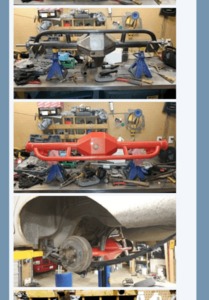Lelo 500
Well-Known Member
Just trying to understand, when the 8 3/4 breaks, what part usually lets go? From what I have read so far it has to do with the housing flexing or pinion angle. Is that correct? With a four link and panhard would that increase durability?

















